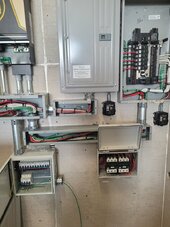I have 2 EG4 6500 EX-48 running in split phase. I ran an AC source from the grid for the bypass feature in the inverters. My thought was at night once the batteries get to a certain percentage the inverter would know to swap to the grid via the bypass feature to run my loads. While it seems to do that it's also charging my batteries?
I only want solar to charge my batteries I never want my grid source to charge my batteries, is there a setting I can change to make sure this doesn't keep happening?
My power bill could actually go up due to this.
I only want solar to charge my batteries I never want my grid source to charge my batteries, is there a setting I can change to make sure this doesn't keep happening?
My power bill could actually go up due to this.



